#aws cloud migration services
Explore tagged Tumblr posts
Text
Why Choosing the Right Tech Stack Matters
A tech stack is simply the combination of programming languages, frameworks, libraries, and tools used to build and run your application. Think of it as the toolkit your developers will use to turn your idea into reality.
.NET Core Application Development: Some stacks are faster to build with and have more reusable components.
Scalability: The right stack makes it easier to handle more users as you grow.
Maintenance: Popular stacks have large communities, so it’s easier to find developers and support.
Performance: The right tools can help your app run faster and smoother.
Angular Development Company
Some common combinations include:
LAMP: Linux, Apache, MySQL, PHP — one of the oldest stacks, still used for many websites.
MEAN/MERN: MongoDB, Express.js, Angular or React, Node.js — modern, JavaScript-based stacks popular for dynamic web apps.
.NET: Microsoft’s stack for building enterprise applications.
Python-Django: Great for rapid development with a clean, easy-to-read syntax.
Factors to Consider When Choosing a Tech Stack
1️⃣ Project Type and Requirements Are you building a simple website or a complex real-time application? For example, an AWS Automation Services site might need different features than a social media app.
2️⃣ Scalability If you expect to grow quickly, choose a stack that handles high traffic and large amounts of data.
3️⃣ Time to Market Some frameworks help developers build MVPs (Minimum Viable Products) faster — great for startups testing an idea.
4️⃣ Developer Availability Popular stacks mean it’s easier to hire or replace developers down the road.
5️⃣ Cost Some technologies have licensing fees, while others are open-source and free.
6️⃣ Community and Support A big community means more tutorials, plugins, and troubleshooting help.
1 note
·
View note
Text
Incloudo Revolutionizes Cloud Solutions with Cutting-Edge DevOps Automation Services
Incloudo emerges as a premier Indian cloud consulting firm by combining its advanced knowledge of DevOps Automation Services with AWS Cloud Management and Managed Cloud Services. The mission of Incloudo enables global business empowerment through its innovation and best practice use which speeds up development cycles and minimizes operational risks and facilitates sector-wide digital transformation.
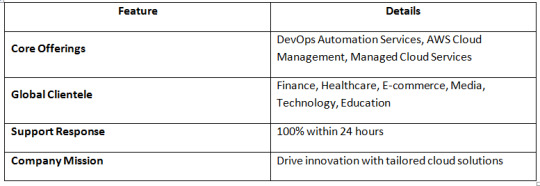
What Makes Incloudo Different?
As a consulting enterprise Incloudo stands beyond regular practice since it serves as an innovation resource. The company delivers industry-specific infrastructure solutions which combine scalable and reliable performance with compliance requirements for every business challenge it supports.
Why businesses choose Incloudo:
Personalized cloud-native solutions.
Expertise in Infrastructure-as-Code (IaC), CI/CD, and continuous monitoring.
Proven record in reducing time-to-market and boosting software quality.
Unmatched customer responsiveness and global coverage.
What Is DevOps Automation—and Why Does It Matter?
DevOps Automation is the systemization of tasks throughout the Software Development Lifecycle (SDLC). It replaces manual interventions with automated pipelines, improving speed, reliability, and collaboration between development and operations.
Key Components of DevOps Automation Services:
Continuous Integration/Continuous Delivery (CI/CD)
Infrastructure-as-Code (IaC)
Configuration Management
Continuous Monitoring
Benefits of DevOps Automation Services with Incloudo
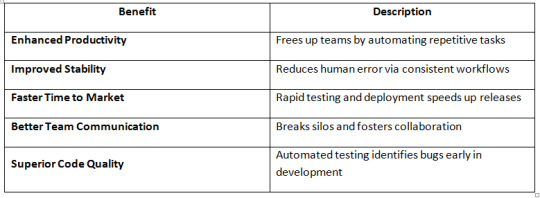
“Automation is not just a buzzword at Incloudo; it’s a foundational strategy that empowers our clients to innovate fearlessly,” says one of the lead DevOps architects at Incloudo.
Real-World Applications by Industry
Incloudo’s DevOps automation solutions are transforming organizations in diverse industries:
Finance & Banking: Enabling secure, compliant infrastructure for rapid transactions.
Healthcare: Delivering HIPAA-compliant cloud platforms for digital health services.
E-commerce: Powering high-availability systems for global shoppers.
Media & Entertainment: Streaming-ready infrastructure with zero downtime.
Education: Scaling virtual classrooms with smart automation.
Power Tools for Every Stage of Automation
Here’s a glimpse into Incloudo’stoolbelt:

Best Practices in DevOps Automation
Incloudo advises businesses to adopt the following automation best practices for optimal success:
Build strong CI/CD pipelines: Automate every step from code commit to deployment.
Automate infrastructure from Day 1: Use IaC to manage servers and configurations.
Promote collaboration: Encourage DevOps culture and cross-team visibility.
Adopt Agile methodologies: Iterate fast, fail fast, and improve continuously.
Monitor everything: Proactive tracking ensures early detection of anomalies.
Incloudo’s Vision for the Future
Incloudo is not just solving today's cloud challenges—it’s future-proofing businesses. With a passion for continuous innovation, Incloudo is expanding its DevOps Automation Services and cloud capabilities to help organizations adapt swiftly in an ever-evolving digital world.
“Whether you're a startup looking to scale fast or an enterprise seeking optimization, Incloudo is your trusted partner in cloud transformation,” says the CEO of Incloudo.
0 notes
Text

Best amazon cloud computing | Fastcurve
Fastcurve is your partner of choice for Amazon cloud computing solutions that will drive operational excellence and innovation. They understand the important role a strong cloud strategy can have, and their team is here to simplify your journey with AWS. Through the innovative implementation of cloud solutions tailored to your specific business needs, they empower you to scale effectively while enhancing security and optimizing costs. Rely on Fastcurve to equip your organization with the tools and expertise necessary to thrive in today’s digital landscape.
0 notes
Text
Unlocking Business Potential with AWS Cloud Migration Services

AWS Cloud Migration Services | Goognu
in today’s fast-paced digital world, businesses face relentless competition and rapidly changing market dynamics. To stay ahead, organizations must be innovative, efficient, and adaptive. Enter AWS Cloud Migration Services — the ultimate solution for businesses aiming to scale, optimize costs, and leverage cutting-edge technology for sustainable growth.
Amazon Web Services (AWS) has established itself as a trusted leader in cloud computing, offering a comprehensive suite of tools and services. From computing power to storage solutions, AWS facilitates a seamless transition to the cloud, ensuring businesses can operate with flexibility and efficiency. With a robust infrastructure, businesses gain access to advanced cloud-based services, such as machine learning, data analytics, and scalable storage. These capabilities make AWS Cloud Migration Services a cornerstone for businesses seeking operational excellence and digital transformation.
Understanding AWS Cloud Migration Services
AWS Cloud Migration Services empower businesses to migrate their data, applications, and workloads to the cloud. This transition is not merely a technological upgrade but a strategic move to unlock growth and innovation. By adopting AWS, organizations can harness the flexibility to scale resources up or down based on demand, ensuring cost efficiency and optimal performance.
One of the key advantages of AWS is its ability to support serverless architectures. By moving away from traditional server-based models, businesses can streamline operations and enhance scalability. AWS’s serverless computing solutions enable organizations to focus on innovation without worrying about infrastructure management.
AWS migration services adopt a holistic approach, starting with a detailed analysis of existing frameworks and workloads. This enables businesses to identify pain points and create a tailored roadmap for a smooth migration. With AWS’s expertise, tools, and resources, organizations can navigate the complexities of cloud migration with confidence, unlocking reliable opportunities for success.
Why Businesses Need AWS Cloud Migration Services
In a world driven by digitalization, businesses are increasingly turning to cloud computing to maintain a competitive edge. Here are some compelling reasons to embrace AWS Cloud Migration Services:
1. Scalability and Flexibility
AWS provides unparalleled scalability, allowing businesses to adjust resources based on demand. Whether scaling up during peak seasons or scaling down during quieter periods, AWS ensures seamless operations. This elasticity helps organizations respond swiftly to changing market conditions.
2. Cost Efficiency
One of the most significant benefits of AWS is its pay-as-you-go model. Businesses only pay for the resources they use, leading to substantial cost savings. This approach enables organizations to optimize their IT spending and reduce operational costs without compromising performance.
3. Enhanced Security
AWS prioritizes security, offering robust measures to protect data, applications, and workloads. By migrating to AWS, businesses can take advantage of advanced security features, ensuring the safety and integrity of their data.
4. Innovation and Growth
AWS’s cloud migration services facilitate the adoption of innovative technologies, such as machine learning and data analytics. These tools empower businesses to gain valuable insights, improve decision-making, and drive growth.
5. Expert Guidance
AWS migration experts play a crucial role in guiding businesses through complex challenges. From assessing IT infrastructure to creating customized migration strategies, these experts ensure a smooth transition to the cloud.
The Role of Goognu in AWS Cloud Migration Services
When it comes to leveraging AWS Cloud Migration Services, Goognu stands out as a trusted partner. With over 13 years of industry experience, Goognu specializes in tailoring AWS solutions to meet the unique needs of businesses. Here’s how Goognu elevates the cloud migration experience:
1. Comprehensive Assessments
Goognu begins with a thorough analysis of an organization’s IT infrastructure. This assessment identifies existing challenges and opportunities, paving the way for a well-defined migration roadmap.
2. End-to-End Support
From initial planning to implementation and ongoing management, Goognu offers end-to-end support. Whether migrating legacy applications or modernizing cloud architecture, Goognu ensures a seamless journey.
3. Customized Solutions
Understanding that every business is unique, Goognu delivers tailored solutions. These include data migration services, infrastructure modernization, and enhanced optimization strategies to drive efficiency and growth.
4. 24/7 Assistance
Goognu’s round-the-clock support ensures businesses are never alone. With reliable assistance available at all times, organizations can address concerns and maintain uninterrupted operations.
Key Features of AWS Cloud Migration Services by Goognu
1. Uplifted Innovation
AWS supports a range of business practices that drive expansion and improvement. By fostering innovation, AWS enables organizations to stay ahead of the curve.
2. Worldwide Recognition and Reach
AWS’s global infrastructure allows businesses to reach a broader audience. This worldwide reach maximizes investments and opens new growth opportunities.
3. Operational Efficiency
AWS simplifies operational tasks, reducing administrative burdens. By enabling seamless interactions, businesses can focus on strategic priorities.
4. Data Analytics and Insights
With AWS’s advanced analytics tools, organizations can gain actionable insights from their data. These insights support informed decision-making and drive better business outcomes.
Benefits of AWS Cloud Migration Services
Improved Performance
AWS ensures high performance through its robust infrastructure and scalable resources. Businesses can achieve consistent performance even during peak demand periods.
Reduced Downtime
AWS’s reliable migration process minimizes downtime, ensuring a smooth transition with minimal disruption to operations.
Greater Agility
By leveraging AWS, businesses can quickly adapt to changing market dynamics and seize new opportunities. This agility is crucial for staying competitive in today’s fast-paced environment.
Enhanced Collaboration
AWS’s cloud-based solutions enable teams to collaborate more effectively, fostering innovation and improving productivity.
Why Choose Goognu for AWS Cloud Migration Services?
1. Proven Expertise
With over 13 years of experience, Goognu brings unmatched expertise in AWS consulting. Their seasoned professionals understand the intricacies of cloud migration, ensuring successful outcomes.
2. Focus on Security
Goognu prioritizes data security, offering solutions that safeguard sensitive information and maintain compliance with industry standards.
3. Cost-Effective Solutions
By optimizing IT spending, Goognu helps businesses reduce costs while maximizing the value of their cloud investments.
4. Reliable Support
Goognu’s 24/7 support ensures businesses always have access to assistance, helping them navigate challenges and achieve their goals.
Conclusion
In an era where digital transformation is imperative, AWS Cloud Migration Services offer businesses the tools and resources they need to thrive. By partnering with Goognu, organizations can harness the full potential of AWS, driving innovation, growth, and efficiency. Whether it’s optimizing costs, improving security, or embracing advanced technologies, AWS and Goognu together pave the way for a successful cloud journey.
Ready to embark on your cloud migration journey? Connect with Goognu today and unlock the true potential of your business with AWS Cloud Migration Services.
0 notes
Text
The impact of Amazon Bedrock on the future of business
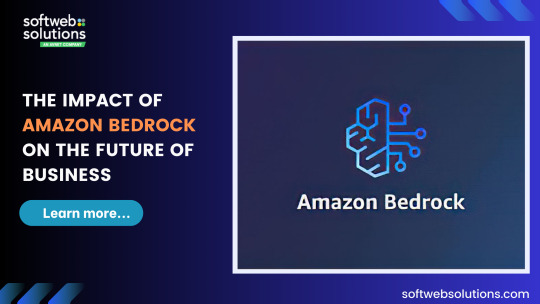
As business technology evolves, Amazon Bedrock is reshaping the way organizations operate. In the future, artificial intelligence could transform not only businesses but entire industries. Embark on a journey exploring how Amazon Bedrock redefines strategies and innovations based on generative AI, where advanced AI tools redefine strategies.
What is Amazon Bedrock and why is it important?
Amazon Bedrock, a new offering from Amazon Web Services (AWS), is a crucial player in the generative AI arena. It provides businesses with advanced tools to harness the power of artificial intelligence, serving as the foundation for innovation. The AWS Cloud Consulting Services offered by Softweb Solutions will help you understand Amazon Bedrock and its potential.
Modern digital landscapes are complex, and businesses must embrace cutting-edge technologies to succeed. Amazon Bedrock offers a comprehensive suite of tools designed to empower organizations across various industries. From predictive analytics to personalized customer experiences, Amazon Bedrock features serve as a driving force for transformative change.
How could Amazon Bedrock impact the future of the business?
The implications of Amazon Bedrock reach far and wide, touching on various aspects of business operations. From streamlining processes to fostering innovation, businesses are set to benefit significantly. The integration of generative AI opens doors to unprecedented opportunities, empowering organizations to stay ahead in the ever-competitive market.
As businesses adopt Amazon Bedrock, they gain access to a wealth of data-driven insights. These insights not only enhance decision-making processes but also pave the way for the development of agile business strategies. The ability to analyze vast datasets in real-time provides a competitive edge, enabling companies to respond swiftly to market changes and consumer trends.
What should entrepreneurs and business owners do to prepare for the impact of Amazon Bedrock?
As Amazon Bedrock becomes a cornerstone of business strategies, entrepreneurs and business owners must proactively prepare for its impact. Embracing generative AI requires a strategic approach, including staff training, infrastructure adjustments, and a forward-thinking mindset. Stay ahead of the curve by exploring AWS Consulting Services for expert guidance on implementing Amazon Bedrock.
Preparation for the Amazon Bedrock era involves more than just technological integration. It demands a cultural shift within organizations—a commitment to fostering a culture of innovation and adaptability. Entrepreneurs and business owners should invest in ongoing training programs to ensure their teams are equipped with the skills needed to harness the full potential of Amazon Bedrock.
Impact on business models
The introduction of Amazon Bedrock is poised to redefine traditional business models. With AI-driven insights and predictive analytics, companies can optimize their operations, identify new revenue streams, and enhance overall efficiency. The adaptability of business models will be crucial to leveraging the full potential of Amazon Bedrock.
Business leaders should view this evolution as an opportunity to reevaluate and redesign their existing business models. Amazon Bedrock enables organizations to move from reactive decision-making to proactive strategy development. This shift not only enhances operational efficiency but also opens doors to innovative approaches to product development, marketing, and customer engagement.
Impact on the workforce
The workforce landscape is evolving, and Amazon Bedrock plays a pivotal role in this transformation. Automation of routine tasks allows employees to focus on strategic and creative endeavors, fostering a more dynamic and engaged workforce. However, ensuring a smooth transition requires thoughtful planning and upskilling initiatives.
Rather than viewing automation as a threat, businesses should position it as a catalyst for professional growth. Amazon Bedrock allows employees to redirect their efforts toward tasks that require critical thinking, creativity, and emotional intelligence – areas where human skills excel. Companies should invest in upskilling programs to equip their workforce for the evolving demands of the digital age.
Impact on customer expectations
Customers are becoming increasingly tech-savvy, and their expectations are evolving accordingly. With Amazon Bedrock, businesses can deliver personalized experiences, predictive services, and a level of efficiency that aligns with the demands of the modern consumer. Adapting to these changing expectations is key to staying competitive in the market.
The integration of Amazon Bedrock allows businesses to anticipate customer needs and preferences with unprecedented accuracy. This proactive approach to customer service not only enhances customer satisfaction but also builds brand loyalty. As businesses align their strategies with the capabilities of Amazon Bedrock, they position themselves as industry leaders in meeting and exceeding customer expectations.
Conclusion
In conclusion, as we navigate the digital frontier, Amazon Bedrock emerges not just as a technological advancement but as a catalyst for profound change. This paradigm shift demands proactive integration, a commitment to innovation, and strategic decisions. The era of generative AI is here, and those who seize the opportunities presented by Amazon Bedrock are not only positioned to survive but to thrive in an age of unparalleled digital innovation.
In the coming years, the transformative impact of Amazon Bedrock on the future of business will unfold. Those businesses that proactively integrate this revolutionary technology into their operations will not only survive but also thrive in an era of unprecedented digital innovation.
FAQ: Frequently asked questions
1. Q: What is Amazon Bedrock, and why is it significant for businesses?
A: Amazon Bedrock is a generative AI solution from AWS, revolutionizing how businesses operate. It offers advanced tools for harnessing the power of AI, providing transformative opportunities for innovation and efficiency.
2. Q: How can businesses prepare for the impact of Amazon Bedrock?
A: Business leaders should proactively prepare by investing in staff training, adapting infrastructure, and fostering a culture of innovation.
3. Q: What are the impacts of Amazon Bedrock on business models?
A: Amazon Bedrock redefines traditional business models by offering AI-driven insights and predictive analytics. This enables businesses to optimize operations, identify new revenue streams, and enhance overall efficiency.
4. Q: How does Amazon Bedrock affect the workforce?
A: Amazon Bedrock automates routine tasks, allowing employees to focus on strategic and creative endeavors. To ensure a smooth transition, businesses should invest in thoughtful planning and upskilling initiatives.
5. Q: How does Amazon Bedrock address changing customer expectations?
A: Amazon Bedrock allows businesses to deliver personalized experiences and predictive services, aligning with modern consumer demand. Adapting to these changing expectations is crucial to staying competitive.
#Amazon Bedrock#Amazon Bedrock features#AWS Consulting Services#aws cloud consulting services#aws cloud migration services
1 note
·
View note
Text
Sigma Solve offers AWS cloud migration services to efficiently transfer your on-premises applications to AWS platform that deliver outstanding performance and operational agility. We have expertise in offering AWS cloud solutions and providing end-to-end AWS migration services, ensuring a smooth transition and unlocking the benefits of scalability, performance, and cost efficiency.
0 notes
Text
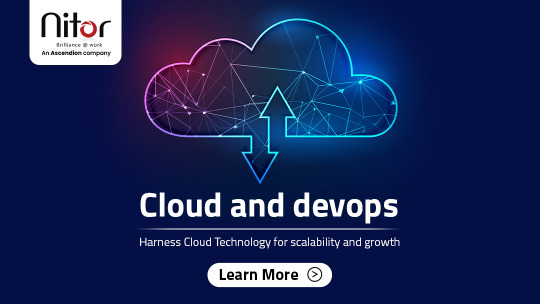
In today's fast-paced digital landscape, cloud technology has emerged as a transformative force that empowers organizations to innovate, scale and adapt like never before. Learn more about our services, go through our blogs, study materials, case studies - https://bit.ly/463FjrO
#engineering#technology#software#softwaredevelopment#cloud#data#itservice#engineeringservices#Nitorinfotech#ascendion#softwareservices#itconsultancycompany#itcompany#cloud pillar#what is cloud data storage#aws cloud migration services#cloud engineering services#pillars of cloud#gcp cloud vision#google cloud#google cloud platform#google cloud console#cloud computing trends#cloud storage services#cloud storage
0 notes
Text
Journey to Devops
The concept of “DevOps” has been gaining traction in the IT sector for a couple of years. It involves promoting teamwork and interaction, between software developers and IT operations groups to enhance the speed and reliability of software delivery. This strategy has become widely accepted as companies strive to provide software to meet customer needs and maintain an edge, in the industry. In this article we will explore the elements of becoming a DevOps Engineer.
Step 1: Get familiar with the basics of Software Development and IT Operations:
In order to pursue a career as a DevOps Engineer it is crucial to possess a grasp of software development and IT operations. Familiarity with programming languages like Python, Java, Ruby or PHP is essential. Additionally, having knowledge about operating systems, databases and networking is vital.
Step 2: Learn the principles of DevOps:
It is crucial to comprehend and apply the principles of DevOps. Automation, continuous integration, continuous deployment and continuous monitoring are aspects that need to be understood and implemented. It is vital to learn how these principles function and how to carry them out efficiently.
Step 3: Familiarize yourself with the DevOps toolchain:
Git: Git, a distributed version control system is extensively utilized by DevOps teams, for code repository management. It aids in monitoring code alterations facilitating collaboration, among team members and preserving a record of modifications made to the codebase.
Ansible: Ansible is an open source tool used for managing configurations deploying applications and automating tasks. It simplifies infrastructure management. Saves time when performing tasks.
Docker: Docker, on the other hand is a platform for containerization that allows DevOps engineers to bundle applications and dependencies into containers. This ensures consistency and compatibility across environments from development, to production.
Kubernetes: Kubernetes is an open-source container orchestration platform that helps manage and scale containers. It helps automate the deployment, scaling, and management of applications and micro-services.
Jenkins: Jenkins is an open-source automation server that helps automate the process of building, testing, and deploying software. It helps to automate repetitive tasks and improve the speed and efficiency of the software delivery process.
Nagios: Nagios is an open-source monitoring tool that helps us monitor the health and performance of our IT infrastructure. It also helps us to identify and resolve issues in real-time and ensure the high availability and reliability of IT systems as well.
Terraform: Terraform is an infrastructure as code (IAC) tool that helps manage and provision IT infrastructure. It helps us automate the process of provisioning and configuring IT resources and ensures consistency between development and production environments.
Step 4: Gain practical experience:
The best way to gain practical experience is by working on real projects and bootcamps. You can start by contributing to open-source projects or participating in coding challenges and hackathons. You can also attend workshops and online courses to improve your skills.
Step 5: Get certified:
Getting certified in DevOps can help you stand out from the crowd and showcase your expertise to various people. Some of the most popular certifications are:
Certified Kubernetes Administrator (CKA)
AWS Certified DevOps Engineer
Microsoft Certified: Azure DevOps Engineer Expert
AWS Certified Cloud Practitioner
Step 6: Build a strong professional network:
Networking is one of the most important parts of becoming a DevOps Engineer. You can join online communities, attend conferences, join webinars and connect with other professionals in the field. This will help you stay up-to-date with the latest developments and also help you find job opportunities and success.
Conclusion:
You can start your journey towards a successful career in DevOps. The most important thing is to be passionate about your work and continuously learn and improve your skills. With the right skills, experience, and network, you can achieve great success in this field and earn valuable experience.
2 notes
·
View notes
Text
Embracing AWS Cloud Migration: A Catalyst for Unleashing Business Potential and Operational Excellence
In an era where adaptability and efficiency reign supreme, the shift to Amazon Web Services (AWS) marks a significant stride toward achieving operational excellence and fostering unparalleled growth. As businesses navigate the complexities of digital transformation, AWS emerges as a beacon of innovation, offering a robust platform tailored to meet diverse business needs and propel them into the…
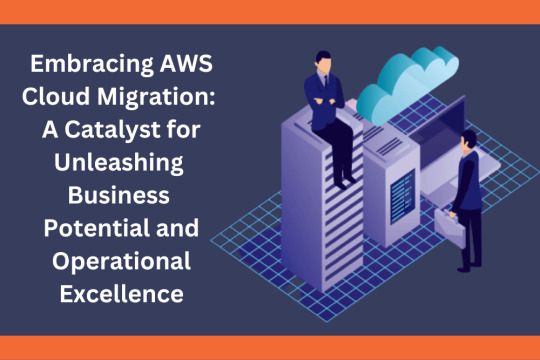
View On WordPress
#AWS cloud migration#AWS services#continuous improvement#cost efficiency#Digital Transformation#future prospects#migration process#operational excellence#security
2 notes
·
View notes
Text
Cloud Migration Services in Infotel India

Strategy Defining
We assess your business goals and objectives, migration triggers, and workload priorities we define and establish your cloud strategy.
Assess Current Infrastructure
We define and establish your cloud strategy and objectives based on your migration triggers, business goals, and workload priorities.
Plan Migration
We plan a holistic migration approach based on work priorities, timelines, milestones, resources, and budget. This step requires careful execution and coordination to reduce downtime and ensure a seamless transition.
Prepare your Organisation
Our team of cloud experts can help your development teams stay informed of cloud-enabled technologies, migration tools, and operational processes.
Implement Migration
The migration process can be divided into three significant phases — Infrastructure migration , Application Migration, Data Migration. Our cloud migration experts help you to migrate your workloads in waves to the cloud environment based on the chosen migration strategy.
Secure and Manage
We help you safeguard and handle workloads across all cloud environments. We help you to make the best use of your cloud service provider’s security tools which include firewalls, intrusion detection, and monitoring tools.
0 notes
Text
Your Cloud Data Migration Security Checklist — Before, During, and After

Migrating to the cloud brings flexibility, scalability, and cost savings — but without a secure migration plan, organizations risk data breaches, compliance violations, and business disruption. This article outlines a step-by-step approach to ensure your cloud data migration is both secure and successful.
The process begins with a thorough data assessment. Identifying sensitive data such as PII, financial records, or intellectual property helps determine security priorities and compliance requirements like GDPR or HIPAA. Data encryption is critical — both in transit and at rest — using secure channels like TLS or VPNs along with provider or end-to-end encryption mechanisms.
Access your WAFR Assessment here@ https://teleglobals.com/cloud-infrastructure-assessment
Choosing a trusted cloud provider with strong compliance certifications (e.g., ISO 27001, SOC 2) is essential. Equally important is understanding the shared responsibility model, where both the provider and customer have roles in security.
Implementing strict access controls — such as role-based permissions and multi-factor authentication — ensures that only authorized users can interact with your systems. Backups must be created and stored securely before migration begins, ensuring data can be recovered if issues arise.
Continuous monitoring, vulnerability scans, and penetration testing before and during migration help detect and mitigate risks. After migration, organizations must maintain strong governance by updating security policies, training staff, and performing regular audits.
Contact to the Expert@ https://teleglobals.com/contact-us
In summary, secure cloud migration is not just about moving data — it’s about protecting it every step of the way. A proactive, layered approach is the key to a secure, compliant, and seamless transition to the cloud.
#Data Migration#Cloud Migration#cloud service providers#cloud consulting services#cloud services#aws managed services#aws cloud consulting services#aws consulting services#teleglobal international
0 notes
Text
Dos and Don’ts of AWS Cloud Migration Services in 2025
The current landscape is witnessing a paradigm shift; hence, a technological revolution is showing no signs of slowing down. The industry has reported a significant trend following the pandemic, namely “cloud migration services.” 63% of Indian companies started investing in hybrid cloud solutions.

Following this, in 2024, the Indian cloud migration services market is projected to grow at a CAGR of 26.31% and is expected to reach a revenue of $7,286.09 million by 2032. Today, India has become a rapidly growing multibillion-dollar cloud consulting services sector, as many businesses have started to consider cloud adoption.
This blog post is intended for all businesses considering cloud migration. We’ve covered various dos and don’ts of migrations. Remember, you are open to filtering them via critical thinking. Let’s get straight into it.
Things Businesses Should and Should Not Do When Migrating to AWS Cloud
The fact that solutions come with their own set of challenges means that migrating to AWS may create challenges for businesses that make mistakes during the migration process. Consequently, it might lead to costly delays, security vulnerabilities, and even worse outcomes.
To avoid such circumstances, here are the following dos and don’ts for businesses to consider when doing so:
Dos
➔ Plan Ahead and Set Goals: First, do your best research to determine what you are willing to achieve with cloud migration. Try to find answers to questions like What does cloud migration involve? How do we protect the data? Will the cloud save money? What are the migration steps? Or what would be the best migration strategy?
Not having a clear understanding of the underlying goals leads to budget violations and working disruptions.
➔ Assess the Current Environment: During the migration process, it's optimal to assess the current status. For that matter, they can analyze existing infrastructure and applications, identify dependencies within systems, consider security or compliance requirements, estimate costs or ROI, and then select the cloud deployment model.
➔ Understanding the Cost Implications: There is a buzz among businesses that AWS cloud migration services save money. The reality is a bit different; however, this isn’t always the case.
If not appropriately planned and not partnered with the right provider, it can flip the situation upside down. To never face it, analyze current infrastructure costs and compare costs with tools like AWS pricing calculator and migration evaluator.
➔ Use PoC: Conducting a Proof of Concept (PoC) is highly preferable for both startups and full-grown businesses. For instance, one popular approach is to opt for a non-critical system.
➔ Have a Backup Plan: Don’t just assume that everything will go smoothly as planned. If something goes wrong, then there will be no ifs or buts, only unwanted outcomes.
Always remember that AWS provides services and features that enable businesses to facilitate data backup and restoration, allowing them to maximize their use of resources.
Don'ts
➔ Migrating too Quickly: Patience is the key, so stick to that saying. Don’t ever try to shift right away; think it all over, and finally work on it. This is recommended since numerous activities need to be checked during the process. In some instances, migration fails due to the OS on the machines becoming obsolete.
➔ Don’t Overlook Security: Businesses should prioritize security above all else. That said, it's ideal to address all the security policies in place. Thoroughly check the configuration of the freshly installed resources and verify settings before migrating data to the cloud.
➔ Don’t Assume: Cloud will NEVER Malfunction: Software is, anyway, imperfect. Although such software comes with a vast network of fail-safe conditions, issues can still occur without any alerts. In that case, preparing for what’s next is always key.
Conclusion
As this blog post comes to a close, it's safe to say that moving to AWS can be beneficial for businesses of all sizes. But, to reduce potential risks associated, it's ideal to consider several dos and don’ts.
Keep in mind that this journey is not merely a technical transition but a strategic move ahead for the future.
0 notes
Text

The finance sector has to follow stringent compliance and regulatory requirements. This makes data security a very important consideration.
With ITTStar’s VDI solution, your financial data stays secure, centralized, and accessible only by authorized personnel. All user activity is monitored and logged to ensure compliance with industry standards. VDI allows financial institutions to simplify their compliance efforts by controlling access to sensitive financial data.
ITTStar’s VDI can help you stay secure and compliant in the finance industry today. Connect with us to find out how!
#vdi#vdifinance#vdisolutions#vdimanagedservices#cloudsecurity#ittstar#aws services#cloud services#cloud migration
0 notes
Text
New to cloud migration? Learn the essentials of AWS data migration services needed in 2024 and find the best migration solution for your business.
For more information visit: https://www.augmentedtechlabs.com/blog/how-to-choose-aws-data-migration-service
0 notes
Text
Best Practices for Migrating Legacy EHR Data Assets to AWS Cloud
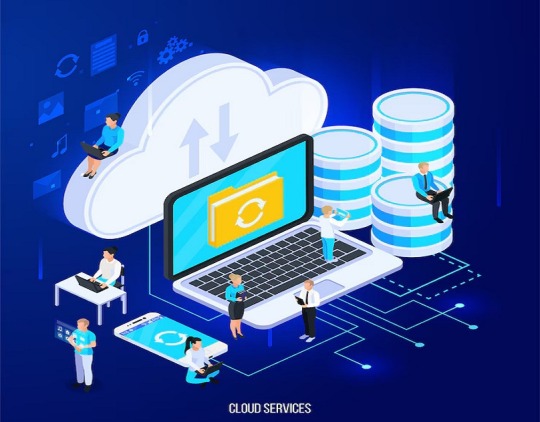
The process of moving data assets in legacy EHR systems to AWS cloud is a complex and time-intensive task. However, by hiring skilled consultants from a recognized AWS cloud data migration firm, healthcare firms can achieve seamless migration. These experts follow key practices like comprehensive assessment, extraction and transformation, migration execution, and auditing. Read this article to learn more about the migration processes and benefits. Read More: https://medium.com/@elenamia/secure-data-assets-in-legacy-health-record-systems-with-aws-cloud-data-migration-d344b2998a16
0 notes
Text
When re-building your application, Which option do you have that gives optimum performance in Cloud?
#technology#automation#aws cloud#gitlab#aws#google cloud#microsoft azure#startup#cloud migration#cloud services#cloud service provider#cloud security#startups#devops#devopsengineer#devsecops
0 notes